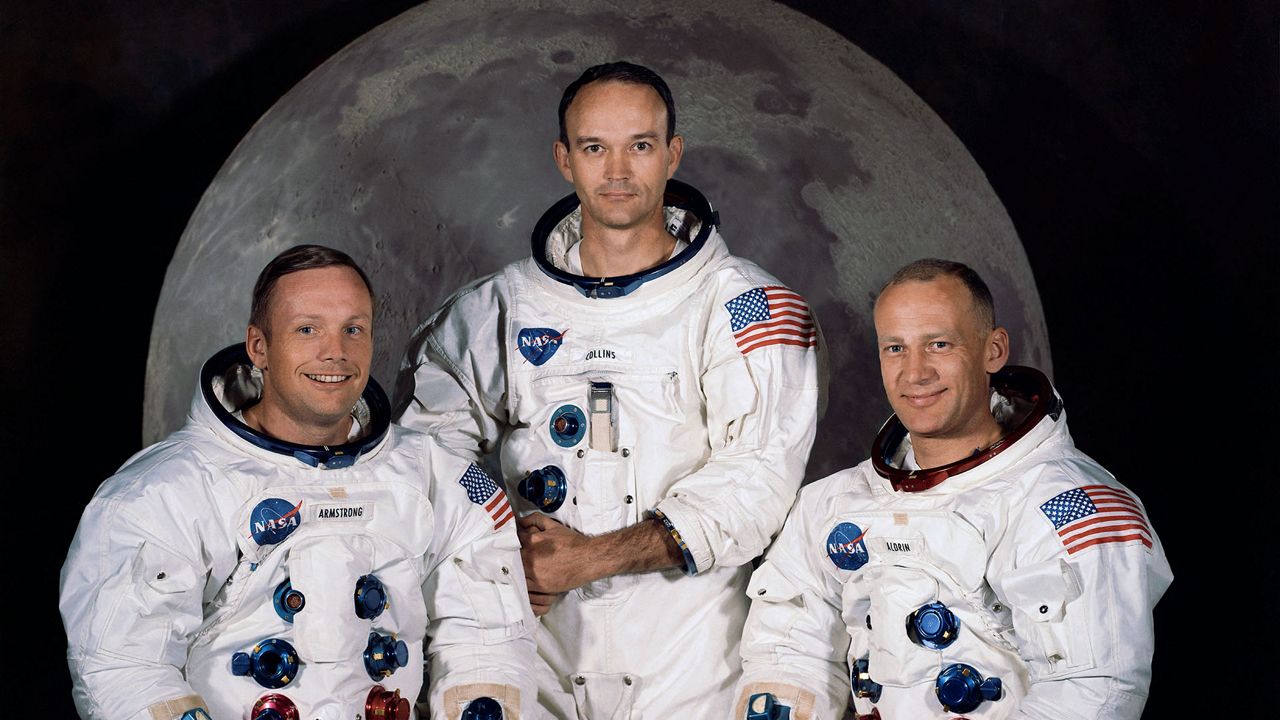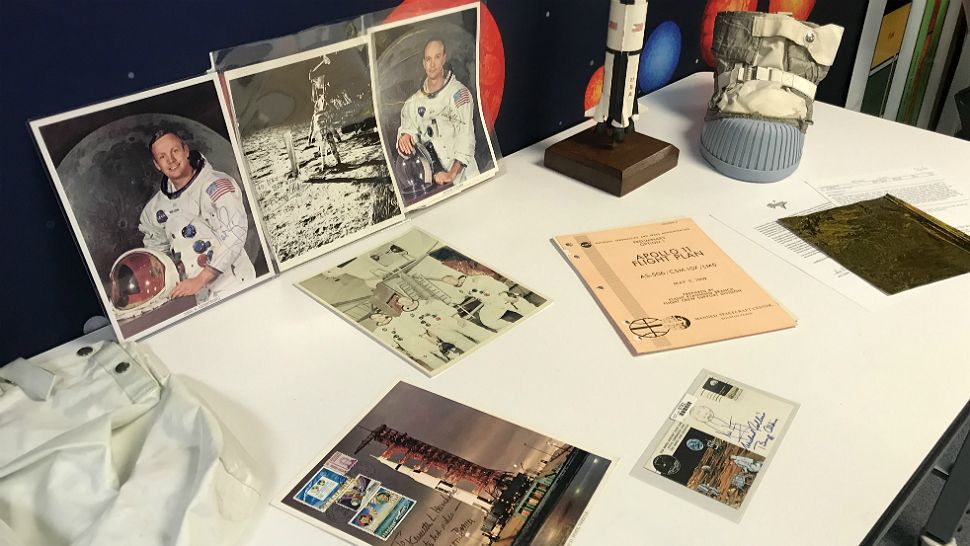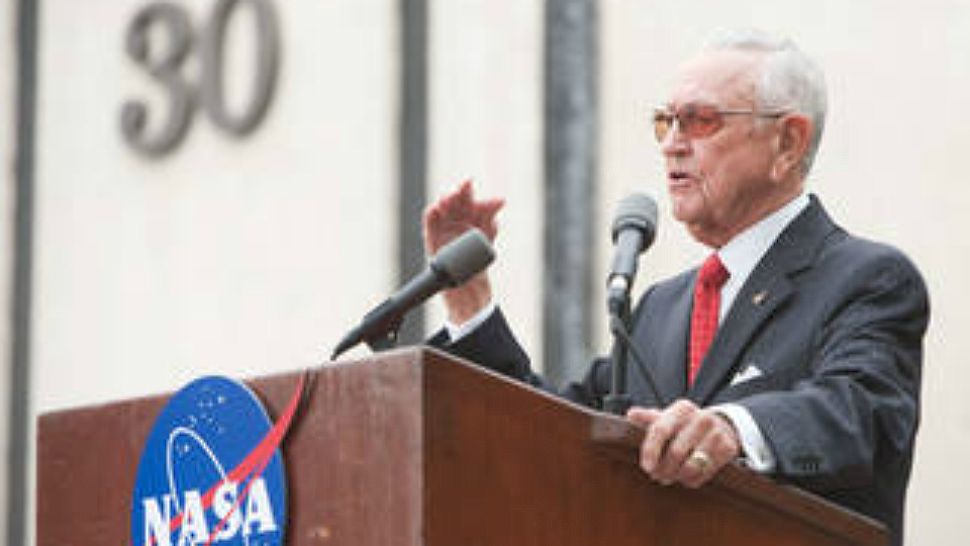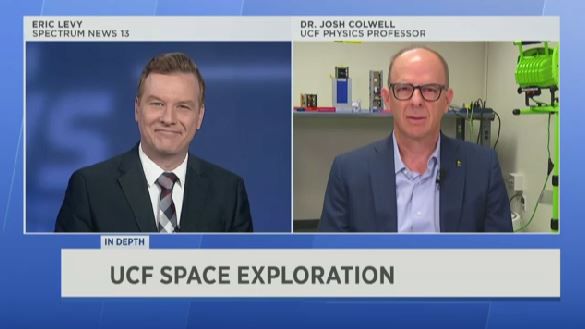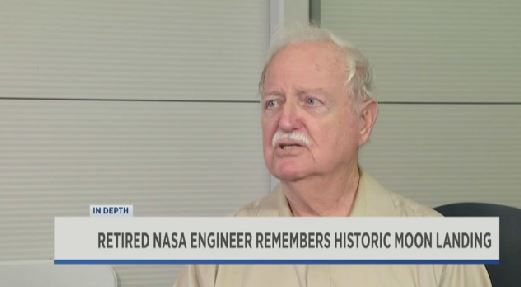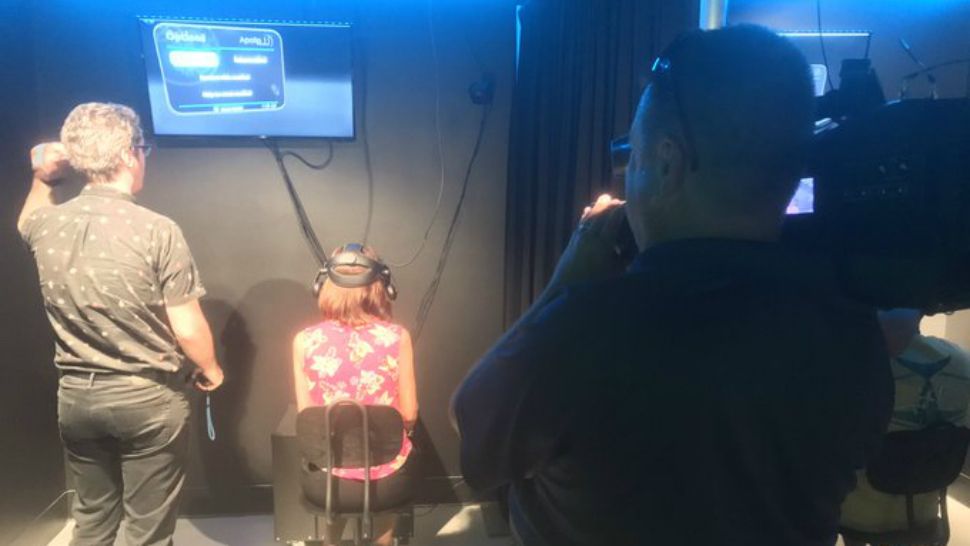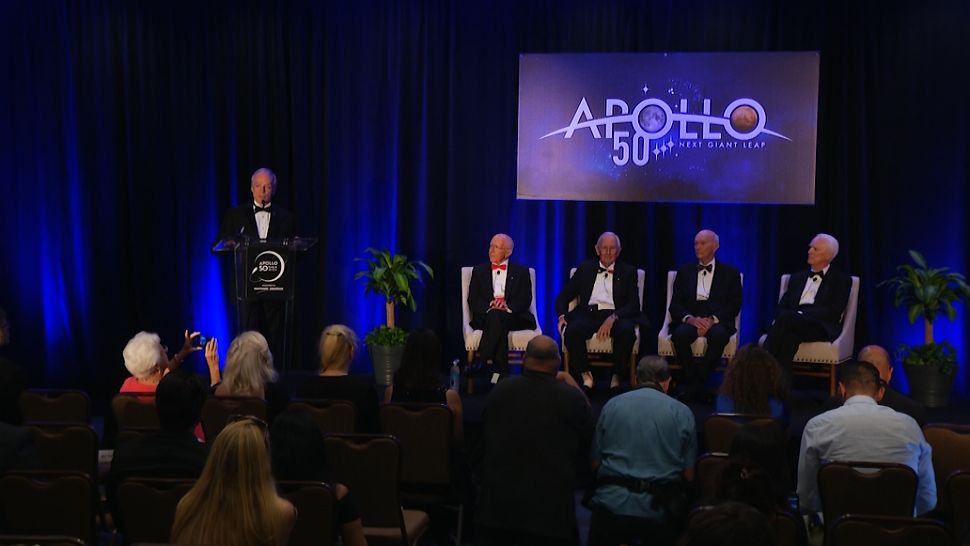KENNEDY SPACE CENTER, Fla. — Vice President Mike Pence recalled how he watched on a black-and-white TV in the basement of his family home in Indiana on July 20, 1969 Neil Armstrong taking the first steps on the moon during a speech on the 50th anniversary of the moon landing at the Kennedy Space Center on Saturday afternoon.
- Watch Pence's arrival and speech here
- Follow our Apollo 11 coverage
- Get more space coverage
- RELATED stories:
- Apollo Mission Astronaut: Moon Landing was World Effort
- NASA Scientist Reflects on Historic Apollo 11 Launch
- NASA Technician, Astronaut Michael Collins Recall Historic Apollo 11 Launch on Anniversary
- Apollo Exhibits Open at Kennedy Space Center
- Children of Apollo Mission Astronauts Share Memories, Hopes for Future
- New Exhibits Debut at Kennedy Space Center for Apollo 11 Anniversary
The vice president addressed Apollo 11's legacy, saying that the crew had the right stuff as he mentioned how dangerous the mission was and how it could have gone wrong at any moment.
With so much history packed in a building five stories high, Pence assured that NASA will be sending people back to the moon and beyond.
"American will return to the moon within the next five years ... (The) first man and woman to the moon will be American," Pence said.
In May, President Donald Trump announced a budget amendment for fiscal year 2020 of $1.6 billion to put men and the first woman on the moon.
You can watch Pence's speech here.
The speech continued the pomp and circumstance that has been happening at the space coast all week and beyond in honor of the momentous moon landing.
Celebrations have been happening at the space coast for the past week and beyond.
The Apollo/Saturn V Center recently got a makeover ahead of the momentous occasion.
It has been 50 years since NASA astronauts — Neil Armstrong, Buzz Aldrin and Michael Collins — took a giant leap for mankind. And 50 years later, we are still in awe.
The two surviving astronauts of the Apollo 11, Aldrin and Collins, planned a tour of their old stomping grounds, checking out the launch pad and firing room where their historic mission began.
Thousands of people were working behind the scenes to help make that critical moment happen.
Bob Pearson, the lunar module simulator lead instructor, recalled teaching Armstrong how to land on the moon.
And John Tribe remembers his time as Apollo 11's propulsion manager what it was like when the rocket took off to send Armstrong, Collins and Aldrin to the moon in a room without windows.
"We watch it on a little black and white TV. You could hear it, feel it in the building. You know you're only about 7 miles away, so you could certainly feel it's going," he recalled.
Veteran staff like Ike Rigell, the Apollo 11 deputy launch director, are looking ahead to the next frontier.
"My grandchildren will see the day when we have people on Mars," he opined.
Rigell is the only living member of the senior management team. His hoped to forge new paths and explore new frontiers has been passed down and passed down — and likely will continue for generations to come.
Gov. Ron DeSantis was also in attendance Saturday.
"The fact that we did it after setting an audacious goal less than ten years earlier that we would put someone on the moon and a lot of people didn't think that could be done, if these guys had not succeeded we may not be here enjoy that today," Ron DeSantis says.
Anthony Leone contributed to this story.






